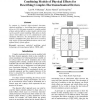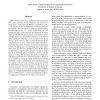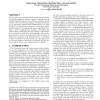2663 search results - page 17 / 533 » How to Choose a Timing Model |
CORR
2010
Springer
13 years 9 months ago
2010
Springer
Two mobile agents (robots) with distinct labels have to meet in an arbitrary, possibly infinite, unknown connected graph or in an unknown connected terrain in the plane. Agents ar...
BMAS
2000
IEEE
14 years 2 months ago
2000
IEEE
In contrast to classical object-oriented electromechanical modeling, i.e. describing plates, suspensions, drives etc. [4], this paper proposes to combine models of basic physical ...
DSN
2005
IEEE
14 years 3 months ago
2005
IEEE
Fault-tolerant protocols, asynchronous and synchronous alike, make stationary fault assumptions: only a fraction f of the total n nodes may fail. Whilst a synchronous protocol is ...
RTSS
2003
IEEE
14 years 2 months ago
2003
IEEE
Real-time systems are growing in complexity and realtime and soft real-time applications are becoming common in general-purpose computing environments. Thus, there is a growing ne...
PVLDB
2008
13 years 9 months ago
2008
OLAP servers based on relational backends typically exploit materialized aggregate tables to improve response times of complex analytical queries. One of the key problems in this ...



